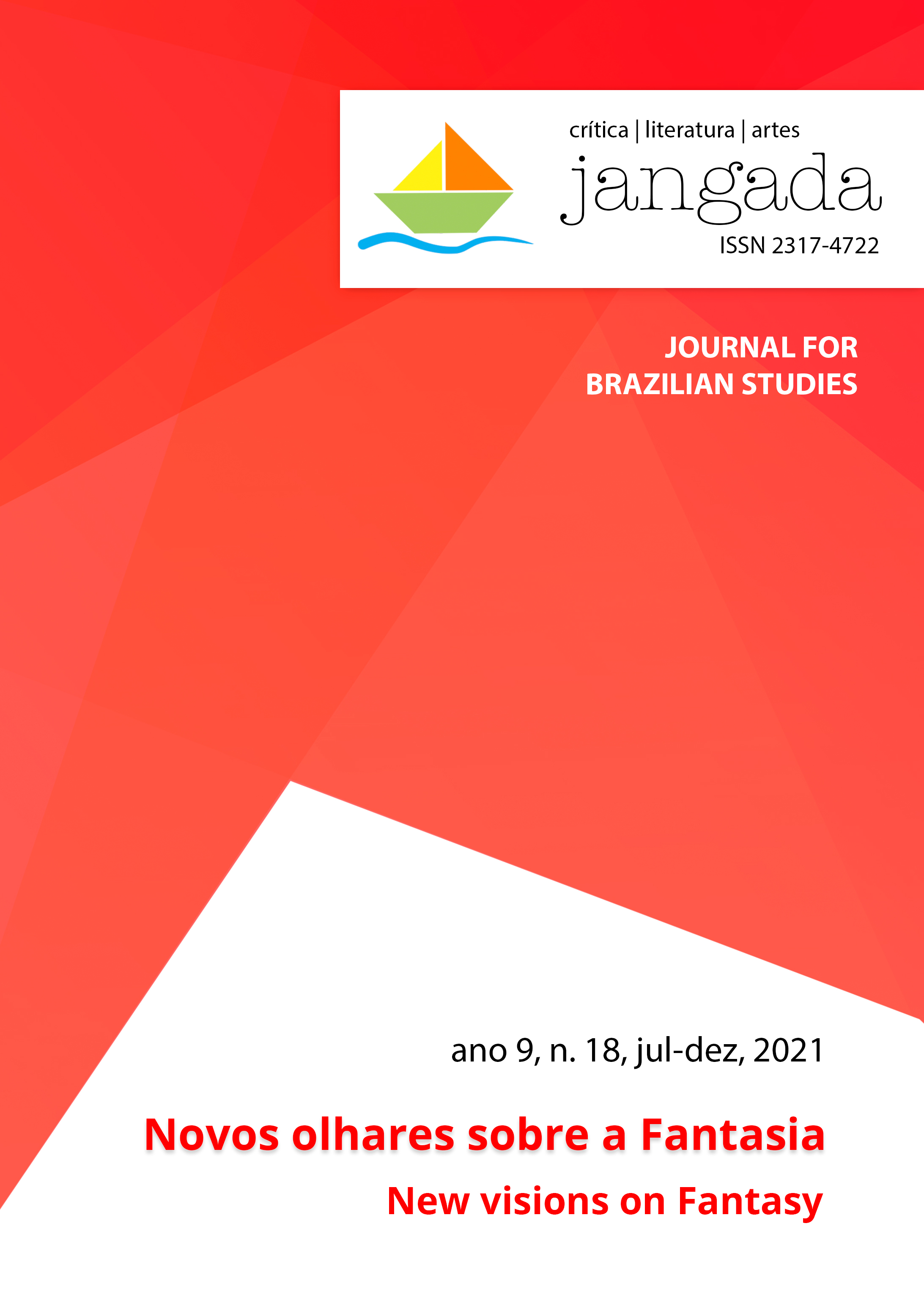Les cris, la boue, le sang : Dracarys ! Que le feu-dragon dévore tout...!
DOI:
https://doi.org/10.35921/jangada.v1i18.425Palabras clave:
extermination, feu nucléaire, Game of Thrones, mère-dragon, MissandeiResumen
Accompanied by their mother Daenerys, the trio of dragons (Drogon, Rhaegal and
Viserion) which symbolizes the Games of Thrones series has mobilized, since the end of the television
broadcast, a great hermeneutical charity; here, it is on the order of fire, Dracarys, that will bear a
phenomenology of this word / formula suitable for triggering nuclear weapons; indeed, between Princess
Targaryen and her children, there is resemblance and porosity, and this is what counts Missandei, who
just before being executed, utters a deep and funeral Dracarys, who will be heard and "obeyed" a little
later ... by an extermination. So, dragon tool of justice, or genocidal monstrosity? The answer is to be
found on the side of the myth.
Descargas
Citas
RÉFÉRENCES BIBLIOGRAPHIQUES
BESSON, A. La Fantasy. Paris : Klincksieck, 2007.
DAVOUST, L. Dragon. In : BESSON, A., & BOUGON, M.-L. Dictionnaire de la fantasy. Paris : Vendémiaire, 2018, p. 94-101.
DUVEZIN-CAUBET Caroline. Dragons à vapeur : vers une poétique de la fantasy néovictorienne contemporaine, thèse de doctorat, sous la dir. de GUTLEBEN, C. Nice : Université de Nice, 2017.
GARCIA, T., « Sous le regard des dragons ». Philosophie Magazine, hors-série no 41 : Game of Thrones, 2019, p. 62-67.
LAUGIER, S. Nos vies en séries, philosophie et morale d’une culture populaire. Paris : Flammarion, « Climats », 2019 a.
LAUGIER, S. Les séries sont des outils d’éducation de pensée et de combat politique. Entretien avec LAUNAY, G. & VECRIN, A., Libération, 19-20 octobre 2019 b.
MARTIN G.R.R, 2008. A Game of Thrones, t. 1, New York : Bantam Books, 1996. Trad. SOLA J. Le Trône de fer. Paris : Pygmalion, 1998. Rééd. Paris : J’ai Lu, 2010.
PACI, A. ; SOULARD, T. La Clarté de l'histoire, la brume des légendes. Paris : Pygmalion, 2 t., 2021.
PIETRI, Jean-François. Daenerys Targaryen : essai d’herméneutique passionnelle, Musanostra, n. 9, 21 décembre 2020. Disponible à : <https://www.musanostra.com/daenerys-targaryenessai-dhermeneutique-passionnelle/>. Accès le 26/07/2021.
SCHAEFFER, J.-M. Pourquoi la fiction ?. Paris : Éditions du Seuil, 1999.
THEVENET, E. Du monstre diabolique à l’animal domestique, qu’est-il arrivé au dragon ? Le Monde, 23 août 2020. Disponible à : https://www.lemonde.fr/pixels/article/2018/08/23/dumonstre-diabolique-a-l-animal-domestique-qu-est-il-arrive-audragon_5345446_4408996.html#:. Accès le 26/07/2021.
TRUBY J. Le tournoi des sept couronnes. Trad. POURRIOL O. Philosophie Magazine, horssérie no 41 : Game of Thrones, 2019, p. 73-74.
RÉFÉRENCES AUDIOVISUELLES
GAME OF THRONES (série télévisée). Créateurs : David Benioff et D. B. Weiss. Producteurs : Mark Huffam, Frank Doelger, Chris Newman, Greg Spence, Lisa McAtackney, Bryan Cogman, Duncan Muggoch. Irlande du Nord, Croatie, Islande, Espagne, Malte et Maroc : HBO, 2011- 2019 (8 saisons).








